The city is a major railway, highway and air-transport hub served by two international airports: Paris–Charles de Gaulle (the second busiest airport in Europe) and Paris–Orly.[8][9] Opened in 1900, the city's subway system, the Paris Métro, serves 5.23 million passengers daily;[10] it is the second busiest metro system in Europe after the Moscow Metro. Gare du Nord is the 24th busiest railway station in the world, but the first located outside Japan, with 262 million passengers in 2015.[11] Paris is especially known for its museums and architectural landmarks: the Louvre was the most visited art museum in the world in 2019, with 9.6 million visitors.[12][13] The Musée d'Orsay, Musée Marmottan Monet, and Musée de l'Orangerie are noted for their collections of French Impressionist art, the Pompidou Centre Musée National d'Art Moderne has the largest collection of modern and contemporary art in Europe, and the Musée Rodin and Musée Picasso exhibit the works of two noted Parisians. The historical district along the Seine in the city centre is classified as a UNESCO Heritage Site, and popular landmarks in the city centre included the Cathedral of Notre Dame de Paris on the Île de la Cité, now closed for renovation after the 15 April 2019 fire. Other popular tourist sites include the Gothic royal chapel of Sainte-Chapelle, also on the Île de la Cité; the Eiffel Tower, constructed for the Paris Universal Exposition of 1889; the Grand Palais and Petit Palais, built for the Paris Universal Exposition of 1900; the Arc de Triomphe on the Champs-Élysées, and the Basilica of Sacré-Coeur on the hill of Montmartre.
Paris received 38 million visitors in 2019, measured by hotel stays, with the largest numbers of foreign visitors coming from the United States, the United Kingdom, Germany, and China.[14] It was ranked as the second most visited travel destination in the world in 2019, after Bangkok and just ahead of London.[15] The football club Paris Saint-Germain and the rugby union club Stade Français are based in Paris. The 80,000-seat Stade de France, built for the 1998 FIFA World Cup, is located just north of Paris in the neighbouring commune of Saint-Denis. Paris hosts the annual French Open Grand Slam tennis tournament on the red clay of Roland Garros. The city hosted the Olympic Games in 1900, 1924 and will host the 2024 Summer Olympics. The 1938 and 1998 FIFA World Cups, the 2007 Rugby World Cup, as well as the 1960, 1984 and 2016 UEFA European Championships were also held in the city. Every July, the Tour de France bicycle race finishes on the Avenue des Champs-Élysées in Paris.
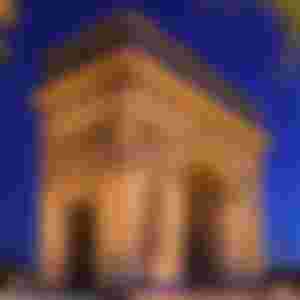
For centuries, Paris has attracted artists from around the world, who arrive in the city to educate themselves and to seek inspiration from its vast pool of artistic resources and galleries. As a result, Paris has acquired a reputation as the "City of Art".[222] Italian artists were a profound influence on the development of art in Paris in the 16th and 17th centuries, particularly in sculpture and reliefs. Painting and sculpture became the pride of the French monarchy and the French royal family commissioned many Parisian artists to adorn their palaces during the French Baroque and Classicism era. Sculptors such as Girardon, Coysevox and Coustou acquired reputations as the finest artists in the royal court in 17th-century France. Pierre Mignard became the first painter to King Louis XIV during this period. In 1648, the Académie royale de peinture et de sculpture (Royal Academy of Painting and Sculpture) was established to accommodate for the dramatic interest in art in the capital. This served as France's top art school until 1793.[223]
Auguste Renoir, Bal du moulin de la Galette, 1876, oil on canvas, 131 cm × 175 cm (52 in × 69 in), Musée d'Orsay
Paris was in its artistic prime in the 19th century and early 20th century, when it had a colony of artists established in the city and in art schools associated with some of the finest painters of the times: Édouard Manet, Claude Monet, Berthe Morisot, Paul Gauguin, Pierre-Auguste Renoir and others. The French Revolution and political and social change in France had a profound influence on art in the capital. Paris was central to the development of Romanticism in art, with painters such as Gericault.[223] Impressionism, Art Nouveau, Symbolism, Fauvism, Cubism and Art Deco movements all evolved in Paris.[223] In the late 19th century, many artists in the French provinces and worldwide flocked to Paris to exhibit their works in the numerous salons and expositions and make a name for themselves.[224] Artists such as Pablo Picasso, Henri Matisse, Vincent van Gogh, Paul Cézanne, Jean Metzinger, Albert Gleizes, Henri Rousseau, Marc Chagall, Amedeo Modigliani and many others became associated with Paris. Picasso, living in Le Bateau-Lavoir in Montmartre, painted his famous La Famille de Saltimbanques and Les Demoiselles d'Avignon between 1905 and 1907.[225] Montmartre and Montparnasse became centres for artistic production.
The most prestigious names of French and foreign sculptors, who made their reputation in Paris in the modern era, are Frédéric Auguste Bartholdi (Statue of Liberty – Liberty Enlightening the World), Auguste Rodin, Camille Claudel, Antoine Bourdelle, Paul Landowski (statue of Christ the Redeemer in Rio de Janeiro) and Aristide Maillol. The Golden Age of the School of Paris ended between the two world wars.


PhotographyEdit
The inventor Nicéphore Niépce produced the first permanent photograph on a polished pewter plate in Paris in 1825. In 1839, after the death of Niépce, Louis Daguerre patented the Daguerrotype, which became the most common form of photography until the 1860s. [223] The work of Étienne-Jules Marey in the 1880s contributed considerably to the development of modern photography. Photography came to occupy a central role in Parisian Surrealist activity, in the works of Man Ray and Maurice Tabard.[226][227] Numerous photographers achieved renown for their photography of Paris, including Eugène Atget, noted for his depictions of street scenes, Robert Doisneau, noted for his playful pictures of people and market scenes (among which Le baiser de l'hôtel de ville has become iconic of the romantic vision of Paris), Marcel Bovis, noted for his night scenes, as well as others such as Jacques-Henri Lartigue and Henri Cartier-Bresson.[223] Poster art also became an important art form in Paris in the late nineteenth century, through the work of Henri de Toulouse-Lautrec, Jules Chéret, Eugène Grasset, Adolphe Willette, Pierre Bonnard, Georges de Feure, Henri-Gabriel Ibels, Paul Gavarni and Alphonse Mucha.[223]
MuseumsEdit
Main article: List of museums in Paris
The Louvre
The Louvre received 9.6 million visitors in 2019, ranking it the most visited museum in the world. [12] Its treasures include the Mona Lisa (La Joconde), the Venus de Milo statue, Liberty Leading the People. The second-most visited museum in the city, with 3.5 million visitors, was the Centre Georges Pompidou, also known as Beaubourg, which houses the Musée National d'Art Moderne.[14] The third most visited Paris museum, in a building constructed for the Paris Universal Exhibition of 1900 as the Orsay railway station, was the Musée d'Orsay, which had 3.3 million visitors in 2019.[14] The Orsay displays French art of the 19th century, including major collections of the Impressionists and Post-Impressionists. The Musée de l'Orangerie, near both the Louvre and the Orsay, also exhibits Impressionists and Post-Impressionists, including most of Claude Monet's large Water Lilies murals. The Musée national du Moyen Âge, or Cluny Museum, presents Medieval art, including the famous tapestry cycle of The Lady and the Unicorn. The Guimet Museum, or Musée national des arts asiatiques, has one of the largest collections of Asian art in Europe. There are also notable museums devoted to individual artists, including the Musée Picasso, the Musée Rodin and the Musée national Eugène Delacroix.
Paris hosts one of the largest science museums in Europe, the Cité des Sciences et de l'Industrie at La Villette. It attracted 2.2 million visitors in 2018.[228] The National Museum of Natural History located near the Jardin des plantes attracted two million visitors in 2018.[228] It is famous for its dinosaur artefacts, mineral collections and its Gallery of Evolution. The military history of France, from the Middle Ages to World War II, is vividly presented by displays at the Musée de l'Armée at Les Invalides, near the tomb of Napoleon. In addition to the national museums, run by the Ministry of Culture, the City of Paris operates 14 museums, including the Carnavalet Museum on the history of Paris, Musée d'Art Moderne de la Ville de Paris, Palais de Tokyo, the House of Victor Hugo, the House of Balzac and the Catacombs of Paris.[229] There are also notable private museums; The Contemporary Art museum of the Louis Vuitton Foundation, designed by architect Frank Gehry, opened in October 2014 in the Bois de Boulogne. It received 1.1 million visitors in 2018.[230]

TheatreEdit
The Opéra Bastille
The largest opera houses of Paris are the 19th-century Opéra Garnier (historical Paris Opéra) and modern Opéra Bastille; the former tends toward the more classic ballets and operas, and the latter provides a mixed repertoire of classic and modern.[231] In middle of the 19th century, there were three other active and competing opera houses: the Opéra-Comique (which still exists), Théâtre-Italien and Théâtre Lyrique (which in modern times changed its profile and name to Théâtre de la Ville).[232] Philharmonie de Paris, the modern symphonic concert hall of Paris, opened in January 2015. Another musical landmark is the Théâtre des Champs-Élysées, where the first performances of Diaghilev's Ballets Russes took place in 1913.
The Comédie Française (Salle Richelieu)
Theatre traditionally has occupied a large place in Parisian culture, and many of its most popular actors today are also stars of French television. The oldest and most famous Paris theatre is the Comédie-Française, founded in 1680. Run by the Government of France, it performs mostly French classics at the Salle Richelieu in the Palais-Royal at 2 rue de Richelieu, next to the Louvre.[233] of Other famous theatres include the Odéon-Théâtre de l'Europe, next to the Luxembourg Gardens, also a state institution and theatrical landmark; the Théâtre Mogador, and the Théâtre de la Gaîté-Montparnasse.[234]
The music hall and cabaret are famous Paris institutions. The Moulin Rouge was opened in 1889. It was highly visible because of its large red imitation windmill on its roof, and became the birthplace of the dance known as the French Cancan. It helped make famous the singers Mistinguett and Édith Piaf and the painter Toulouse-Lautrec, who made posters for the venue. In 1911, the dance hall Olympia Paris invented the grand staircase as a settling for its shows, competing with its great rival, the Folies Bergère. Its stars in the 1920s included the American singer and dancer Josephine Baker. Later, Olympia Paris presented Dalida, Edith Piaf, Marlene Dietrich, Miles Davis, Judy Garland and the Grateful Dead.
The Casino de Paris presented many famous French singers, including Mistinguett, Maurice Chevalier and Tino Rossi. Other famous Paris music halls include Le Lido, on the Champs-Élysées, opened in 1946; and the Crazy Horse Saloon, featuring strip-tease, dance and magic, opened in 1951. A half dozen music halls exist today in Paris, attended mostly by visitors to the city.[235]

LiteratureEdit
Main article: Writers in Paris
The first book printed in France, Epistolae ("Letters"), by Gasparinus de Bergamo (Gasparino da Barzizza), was published in Paris in 1470 by the press established by Johann Heynlin. Since then, Paris has been the centre of the French publishing industry, the home of some of the world's best-known writers and poets, and the setting for many classic works of French literature. Almost all the books published in Paris in the Middle Ages were in Latin, rather than French. Paris did not become the acknowledged capital of French literature until the 17th century, with authors such as Boileau, Corneille, La Fontaine, Molière, Racine, several coming from the provinces, as well as the foundation of the Académie française.[236] In the 18th century, the literary life of Paris revolved around the cafés and salons; it was dominated by Voltaire, Jean-Jacques Rousseau, Pierre de Marivaux and Pierre Beaumarchais.
During the 19th century, Paris was the home and subject for some of France's greatest writers, including Charles Baudelaire, Stéphane Mallarmé, Mérimée, Alfred de Musset, Marcel Proust, Émile Zola, Alexandre Dumas, Gustave Flaubert, Guy de Maupassant and Honoré de Balzac. Victor Hugo's The Hunchback of Notre Dame inspired the renovation of its setting, the Notre-Dame de Paris.[237] Another of Victor Hugo's works, Les Misérables, written while he was in exile outside France during the Second Empire, described the social change and political turmoil in Paris in the early 1830s.[238] One of the most popular of all French writers, Jules Verne, worked at the Theatre Lyrique and the Paris stock exchange, while he did research for his stories at the National Library.[239][verification needed]
In the 20th century, the Paris literary community was dominated by figures such as Colette, André Gide, François Mauriac, André Malraux, Albert Camus, and, after World War II, by Simone de Beauvoir and Jean-Paul Sartre. Between the wars it was the home of many important expatriate writers, including Ernest Hemingway, Samuel Beckett, and, in the 1970s, Milan Kundera. The winner of the 2014 Nobel Prize in Literature, Patrick Modiano (who lives in Paris), based most of his literary work on the depiction of the city during World War II and the 1960s–1970s.[240]
Paris is a city of books and bookstores. In the 1970s, 80 percent of French-language publishing houses were found in Paris, almost all on the Left Bank in the 5th, 6th and 7th arrondissements. Since that time, because of high prices, some publishers have moved out to the less expensive areas.[241] It is also a city of small bookstores. There are about 150 bookstores in the 5th arrondissement alone, plus another 250 book stalls along the Seine. Small Paris bookstores are protected against competition from discount booksellers by French law; books, even e-books, cannot be discounted more than five percent below their publisher's cover price.[242]
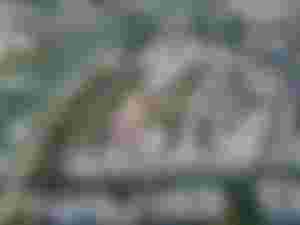
MusicEdit
Main articles: Music in Paris and History of music in Paris
Olympia, a famous music hall
In the late 12th century, a school of polyphony was established at Notre-Dame. Among the Trouvères of northern France, a group of Parisian aristocrats became known for their poetry and songs. Troubadours, from the south of France, were also popular. During the reign of François I, in the Renaissance era, the lute became popular in the French court. The French royal family and courtiers "disported themselves in masques, ballets, allegorical dances, recitals, and opera and comedy", and a national musical printing house was established.[223] In the Baroque-era, noted composers included Jean-Baptiste Lully, Jean-Philippe Rameau, and François Couperin.[223] The Conservatoire de Musique de Paris was founded in 1795.[243] By 1870, Paris had become an important centre for symphony, ballet and operatic music.
Romantic-era composers (in Paris) include Hector Berlioz (La Symphonie fantastique), Charles Gounod (Faust), Camille Saint-Saëns (Samson et Delilah), Léo Delibes (Lakmé) and Jules Massenet (Thaïs), among others.[223] Georges Bizet's Carmen premiered 3 March 1875. Carmen has since become one of the most popular and frequently-performed operas in the classical canon.[244][245] Among the Impressionist composers who created new works for piano, orchestra, opera, chamber music and other musical forms, stand in particular, Claude Debussy (Suite bergamasque, and its well-known third movement, Clair de lune, La Mer, Pelléas et Mélisande), Erik Satie (Gymnopédies, "Je te veux", Gnossiennes, Parade) and Maurice Ravel (Miroirs, Boléro, La valse, L'heure espagnole). Several foreign-born composers, such as Frédéric Chopin (Poland), Franz Liszt (Hungary), Jacques Offenbach (Germany), Niccolò Paganini (Italy), and Igor Stravinsky (Russia), established themselves or made significant contributions both with their works and their influence in Paris.

Bal-musette is a style of French music and dance that first became popular in Paris in the 1870s and 1880s; by 1880 Paris had some 150 dance halls in the working-class neighbourhoods of the city.[246] Patrons danced the bourrée to the accompaniment of the cabrette (a bellows-blown bagpipe locally called a "musette") and often the vielle à roue (hurdy-gurdy) in the cafés and bars of the city. Parisian and Italian musicians who played the accordion adopted the style and established themselves in Auvergnat bars especially in the 19th arrondissement,[247] and the romantic sounds of the accordion has since become one of the musical icons of the city. Paris became a major centre for jazz and still attracts jazz musicians from all around the world to its clubs and cafés.[248]
Paris is the spiritual home of gypsy jazz in particular, and many of the Parisian jazzmen who developed in the first half of the 20th century began by playing Bal-musette in the city.[247] Django Reinhardt rose to fame in Paris, having moved to the 18th arrondissement in a caravan as a young boy, and performed with violinist Stéphane Grappelli and their Quintette du Hot Club de France in the 1930s and 1940s.[249]
Immediately after the War the Saint-Germain-des-Pres quarter and the nearby Saint-Michel quarter became home to many small jazz clubs, mostly found in cellars because of a lack of space; these included the Caveau des Lorientais, the Club Saint-Germain, the Rose Rouge, the Vieux-Colombier, and the most famous, Le Tabou. They introduced Parisians to the music of Claude Luter, Boris Vian, Sydney Bechet, Mezz Mezzrow, and Henri Salvador. Most of the clubs closed by the early 1960s, as musical tastes shifted toward rock and roll.[250]
Some of the finest manouche musicians in the world are found here playing the cafés of the city at night.[249] Some of the more notable jazz venues include the New Morning, Le Sunset, La Chope des Puces and Bouquet du Nord.[248][249] Several yearly festivals take place in Paris, including the Paris Jazz Festival and the rock festival Rock en Seine.[251] The Orchestre de Paris was established in 1967.[252] On 19 December 2015, Paris and other worldwide fans commemorated the 100th anniversary of the birth of Edith Piaf—a cabaret singer-songwriter and actress who became widely regarded as France's national chanteuse, as well as being one of France's greatest international stars.[253] Other singers—of similar style—include Maurice Chevalier, Charles Aznavour, Yves Montand, as well as Charles Trenet.
Paris has a big hip hop scene. This music became popular during the 1980s.[254] The presence of a large African and Caribbean community helped to its development, it gave a voice, a political and social status for many minorities.[255]

CinemaEdit
See also: List of films set in Paris
The movie industry was born in Paris when Auguste and Louis Lumière projected the first motion picture for a paying audience at the Grand Café on 28 December 1895.[256] Many of Paris' concert/dance halls were transformed into cinemas when the media became popular beginning in the 1930s. Later, most of the largest cinemas were divided into multiple, smaller rooms. Paris' largest cinema room today is in the Grand Rex theatre with 2,700 seats.[257]
Big multiplex cinemas have been built since the 1990s. UGC Ciné Cité Les Halles with 27 screens, MK2 Bibliothèque with 20 screens and UGC Ciné Cité Bercy with 18 screens are among the largest.[258]
Parisians tend to share the same movie-going trends as many of the world's global cities, with cinemas primarily dominated by Hollywood-generated film entertainment. French cinema comes a close second, with major directors (réalisateurs) such as Claude Lelouch, Jean-Luc Godard, and Luc Besson, and the more slapstick/popular genre with director Claude Zidi as an example. European and Asian films are also widely shown and appreciated.[259] On 2 February 2000, Philippe Binant realised the first digital cinema projection in Europe, with the DLP CINEMA technology developed by Texas Instruments, in Paris.[260][261]
Restaurants and cuisineEdit
See also: French cuisine
Dining room of the Vagenende
Le Zimmer, on the Place du Châtelet, where Géo Lefèvre first suggested the idea of a Tour de France to Henri Desgrange in 1902
Since the late 18th century, Paris has been famous for its restaurants and haute cuisine, food meticulously prepared and artfully presented. A luxury restaurant, La Taverne Anglaise, opened in 1786 in the arcades of the Palais-Royal by Antoine Beauvilliers; it featured an elegant dining room, an extensive menu, linen tablecloths, a large wine list and well-trained waiters; it became a model for future Paris restaurants. The restaurant Le Grand Véfour in the Palais-Royal dates from the same period.[262] The famous Paris restaurants of the 19th century, including the Café de Paris, the Rocher de Cancale, the Café Anglais, Maison Dorée and the Café Riche, were mostly located near the theatres on the Boulevard des Italiens; they were immortalised in the novels of Balzac and Émile Zola. Several of the best-known restaurants in Paris today appeared during the Belle Epoque, including Maxim's on Rue Royale, Ledoyen in the gardens of the Champs-Élysées, and the Tour d'Argent on the Quai de la Tournelle.[263]
Today, due to Paris' cosmopolitan population, every French regional cuisine and almost every national cuisine in the world can be found there; the city has more than 9,000 restaurants.[264] The Michelin Guide has been a standard guide to French restaurants since 1900, awarding its highest award, three stars, to the best restaurants in France. In 2018, of the 27 Michelin three-star restaurants in France, ten are located in Paris. These include both restaurants which serve classical French cuisine, such as L'Ambroisie in the Place des Vosges, and those which serve non-traditional menus, such as L'Astrance, which combines French and Asian cuisines. Several of France's most famous chefs, including Pierre Gagnaire, Alain Ducasse, Yannick Alléno and Alain Passard, have three-star restaurants in Paris.[265][266]
Les Deux Magots café on Boulevard Saint-Germain
In addition to the classical restaurants, Paris has several other kinds of traditional eating places. The café arrived in Paris in the 17th century, when the beverage was first brought from Turkey, and by the 18th century Parisian cafés were centres of the city's political and cultural life. The Café Procope on the Left Bank dates from this period. In the 20th century, the cafés of the Left Bank, especially Café de la Rotonde and Le Dôme Café in Montparnasse and Café de Flore and Les Deux Magots on Boulevard Saint Germain, all still in business, were important meeting places for painters, writers and philosophers.[263] A bistro is a type of eating place loosely defined as a neighbourhood restaurant with a modest decor and prices and a regular clientele and a congenial atmosphere. Its name is said to have come in 1814 from the Russian soldiers who occupied the city; "bistro" means "quickly" in Russian, and they wanted their meals served rapidly so they could get back their encampment. Real bistros are increasingly rare in Paris, due to rising costs, competition from cheaper ethnic restaurants, and different eating habits of Parisian diners.[267] A brasserie originally was a tavern located next to a brewery, which served beer and food at any hour. Beginning with the Paris Exposition of 1867; it became a popular kind of restaurant which featured beer and other beverages served by young women in the national costume associated with the beverage, particular German costumes for beer. Now brasseries, like cafés, serve food and drinks throughout the day.[268]
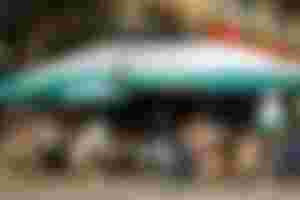
FashionEdit
Main article: French fashion
Magdalena Frackowiak at Paris Fashion Week (Fall 2011)
Since the 19th century, Paris has been an international fashion capital, particularly in the domain of haute couture (clothing hand-made to order for private clients).[269] It is home to some of the largest fashion houses in the world, including Dior and Chanel, as well as many other well-known and more contemporary fashion designers, such as Karl Lagerfeld, Jean-Paul Gaultier, Yves Saint Laurent, Givenchy, and Christian Lacroix. Paris Fashion Week, held in January and July in the Carrousel du Louvre among other renowned city locations, is one of the top four events on the international fashion calendar. The other fashion capitals of the world, Milan, London, and New York also host fashion weeks.[270][271] Moreover, Paris is also the home of the world's largest cosmetics company: L'Oréal as well as three of the top five global makers of luxury fashion accessories: Louis Vuitton, Hermés, and Cartier.[272] Most of the major fashion designers have their showrooms along the Avenue Montaigne, between the Champs-Élysées and the Seine.
Holidays and festivalsEdit
Republican Guards parading on Bastille Day
Bastille Day, a celebration of the storming of the Bastille in 1789, the biggest festival in the city, is a military parade taking place every year on 14 July on the Champs-Élysées, from the Arc de Triomphe to Place de la Concorde. It includes a flypast over the Champs Élysées by the Patrouille de France, a parade of military units and equipment, and a display of fireworks in the evening, the most spectacular being the one at the Eiffel Tower.[273]
Some other yearly festivals are Paris-Plages, a festive event that lasts from mid-July to mid-August when the Right Bank of the Seine is converted into a temporary beach with sand, deck chairs and palm trees;[273] Journées du Patrimoine, Fête de la Musique, Techno Parade, Nuit Blanche, Cinéma au clair de lune, Printemps des rues, Festival d'automne, and Fête des jardins. The Carnaval de Paris, one of the oldest festivals in Paris, dates back to the Middle Ages.
paris my dream city..It so so nice and charming place.


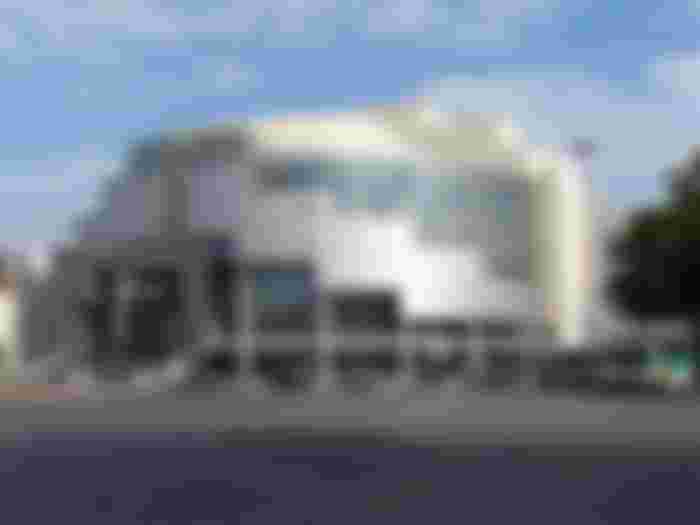




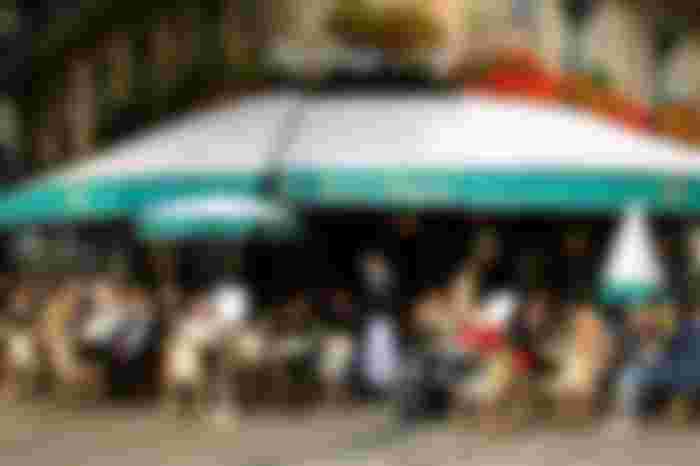
Too much interesting bro😍 Also plss subscribe me as i am new